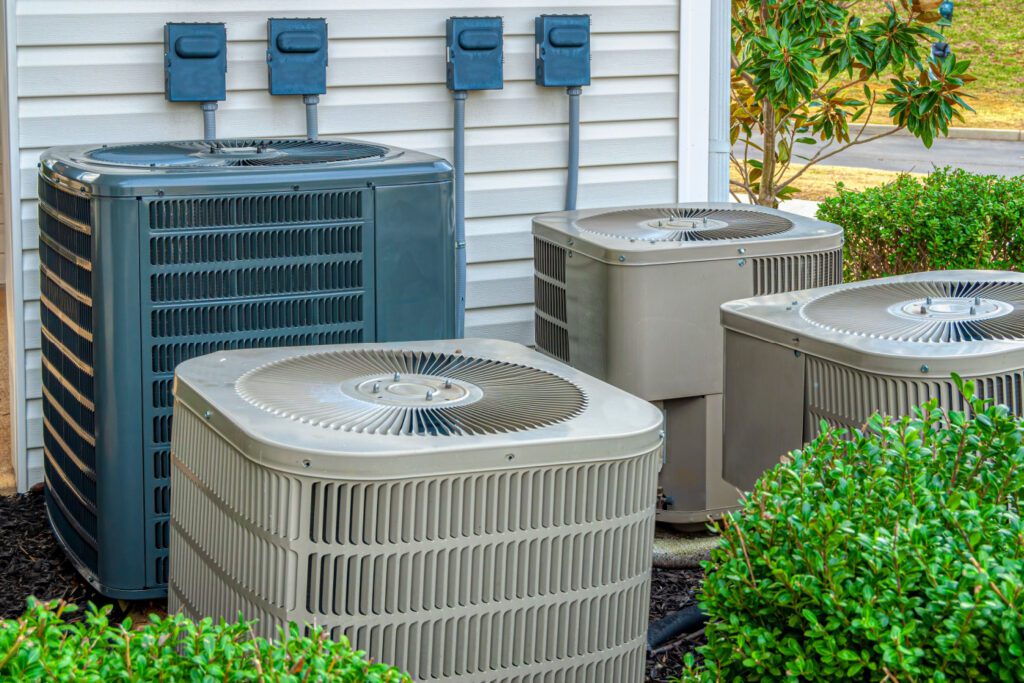Heating, Ventilation, and Air Conditioning (HVAC) systems are the unsung heroes of our indoor environments, providing comfort and maintaining optimal living conditions. To fully appreciate the convenience they bring, it’s essential to understand how these systems work.
This guide will delve into how does an HVAC system work, exploring the processes that keep our homes warm in winter and cool in summer.
HVAC 101: Understanding How Air Conditioning and Heating Systems Work
Let’s break down all the essential elements of an HVAC system so you can understand how they work, starting with the basics.
Basic Components
At its core, an HVAC system comprises two main components: the indoor and outdoor units. The indoor unit, often in a utility closet or basement, houses the evaporator coil. In contrast, the outdoor unit contains the condenser coil.
These coils are vital for the heat exchange, enabling heating and cooling.
Heating Process
In colder months, the HVAC system’s primary function is to heat the indoor air. The process begins with the furnace, powered by gas, electricity, or oil.
When the thermostat signals a need for heat, the furnace ignites the fuel, creating warm air. This heated air is circulated through the ductwork and dispersed into different rooms via vents, raising the indoor temperature to the desired level.
Cooling Process
Conversely, during warmer months, the HVAC system shifts its focus to cooling. The cooling process starts with the air conditioner’s compressor in the outdoor unit.
The compressor pressurizes and circulates a refrigerant, typically a unique fluid with a low boiling point. As this refrigerant passes through the evaporator coil inside the indoor unit, it absorbs heat from the indoor air.
The absorbed heat causes the refrigerant to evaporate into a gas, and the cooled air is distributed throughout the house.
Air Ventilation
Ventilation is a critical aspect of HVAC systems, ensuring the circulation of fresh air and the removal of indoor pollutants. The system draws in outside air, filters it to remove dust and debris, and distributes it throughout the home.
This constant exchange of air helps maintain indoor air quality and prevents the buildup of harmful substances.
Thermostat Control
The thermostat serves as the control center for the HVAC system. Modern thermostats are often programmable, allowing users to set temperature preferences for different times of the day.
When the indoor temperature deviates from the set point, the thermostat signals the HVAC system to heat or cool the air as needed, maintaining a comfortable environment.
If you’re still not sure about how this works, A-tech appliance repair service can guide and inform you better!
Humidity Regulation
HVAC systems also play a crucial role in regulating indoor humidity levels. Cooling removes moisture from the air, creating a more comfortable living space. Some HVAC systems have additional features, such as dehumidifiers, to control humidity further and enhance overall comfort.

Have Any More Questions About HVAC Systems?
HVAC systems are intricate systems designed to maintain a comfortable and healthy indoor environment year-round. Homeowners can better appreciate the significance of regular maintenance and professional inspections by understanding the fundamental processes involved in heating, ventilation, and air conditioning.
Proper care ensures that these systems operate efficiently, providing the desired level of comfort while promoting energy efficiency and prolonging the lifespan of the HVAC unit. As technology advances, the future of HVAC systems promises more significant energy efficiency and enhanced environmental sustainability.
If you have any questions about HVAC systems or queries about installations or repairs, contact A-Tech Appliance Repair, who will gladly assist.



